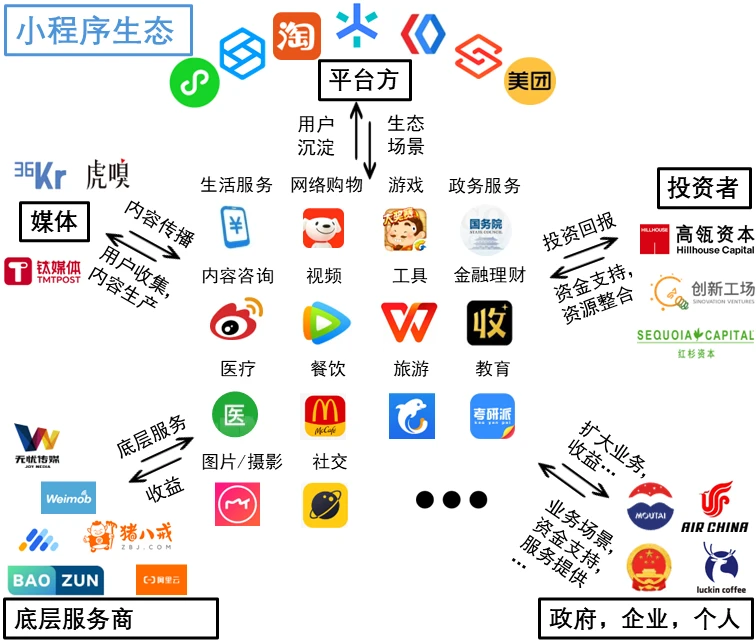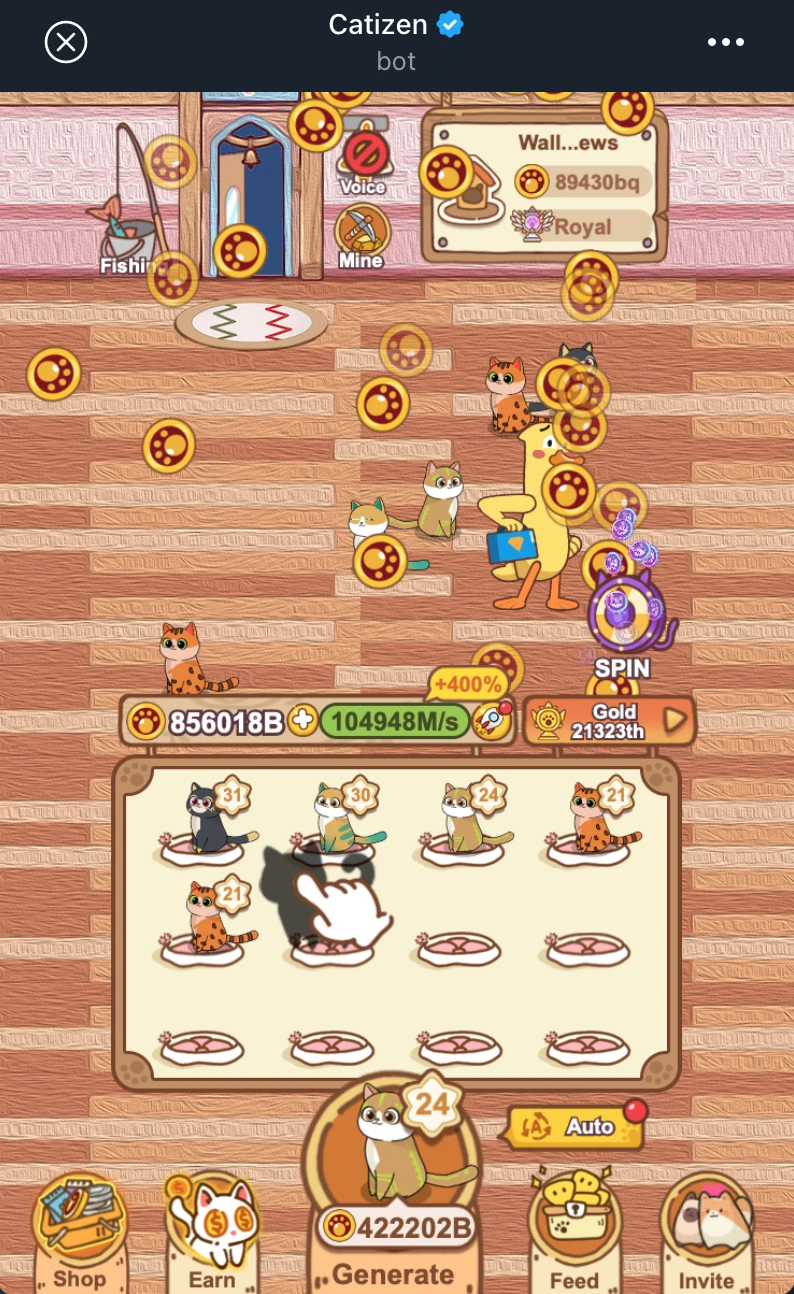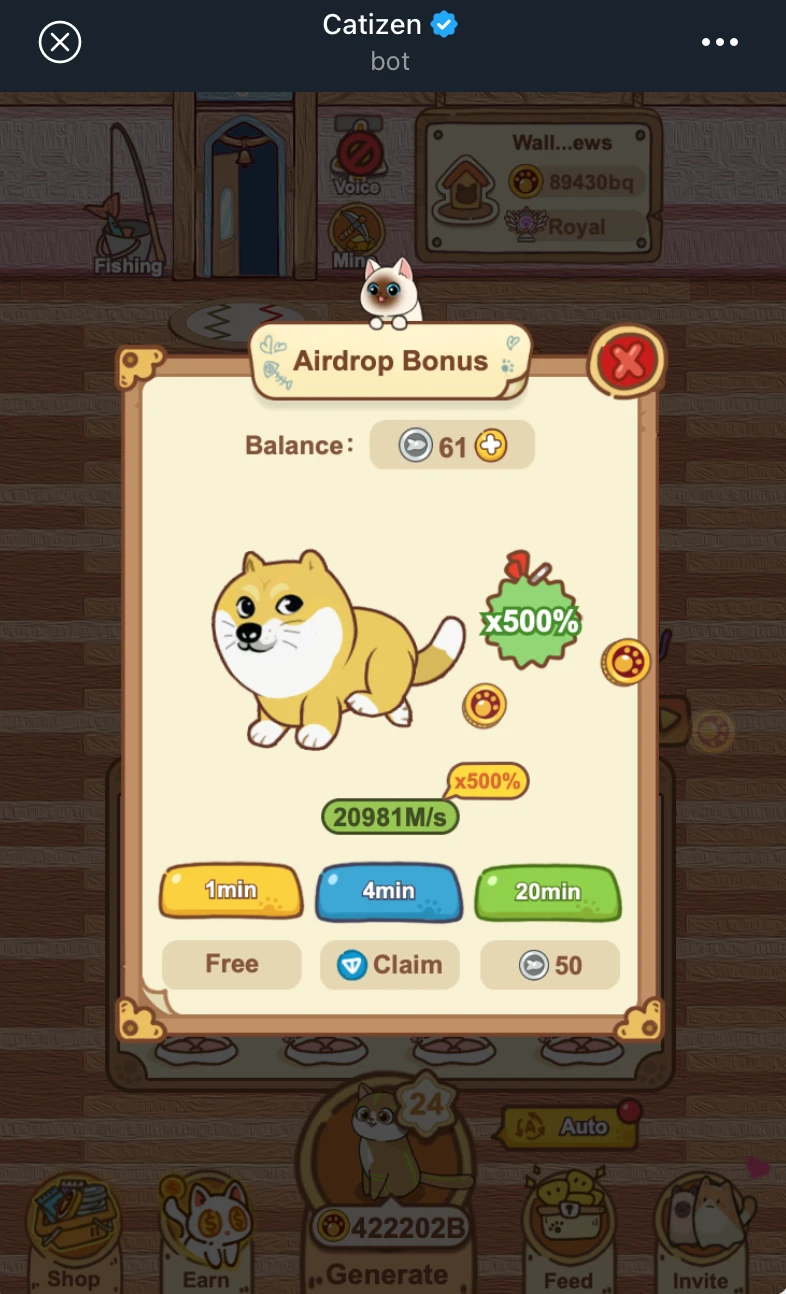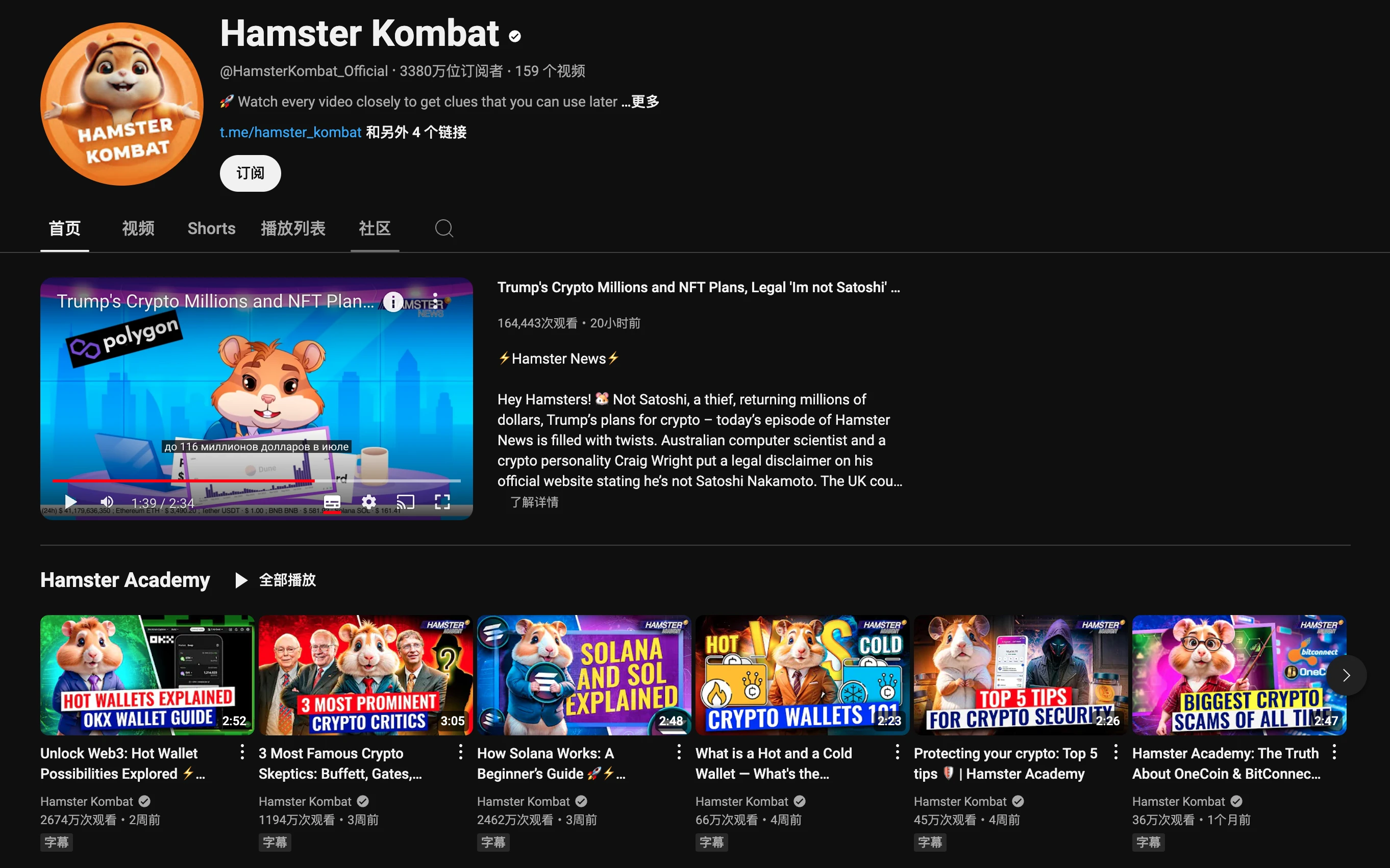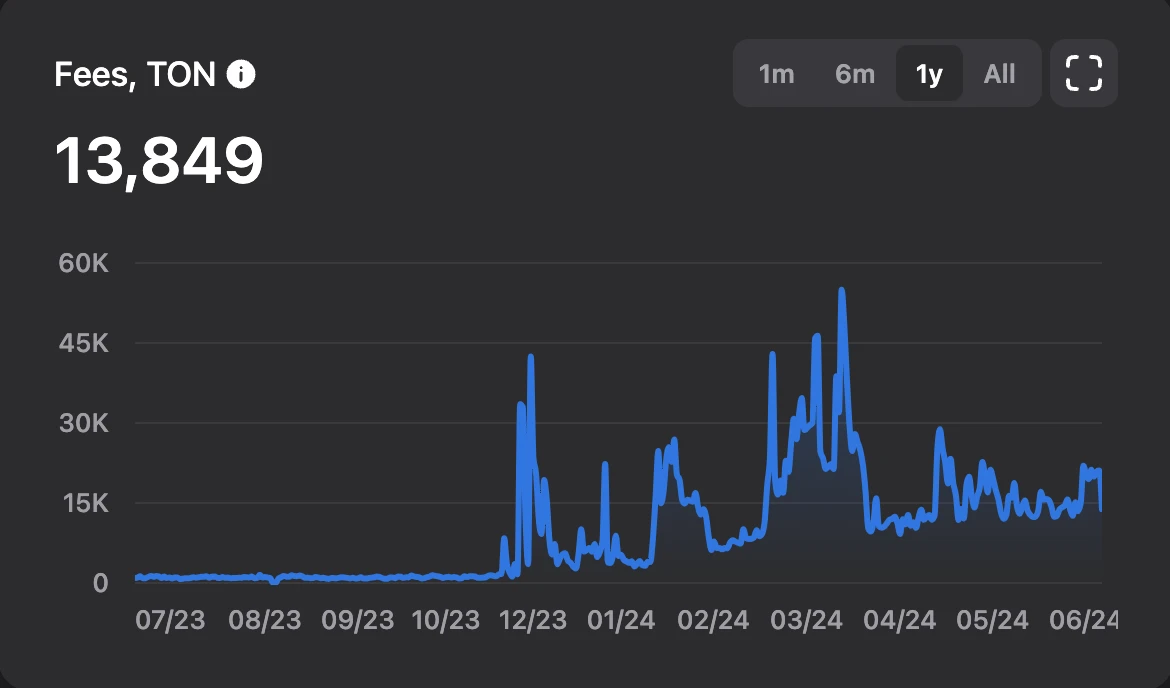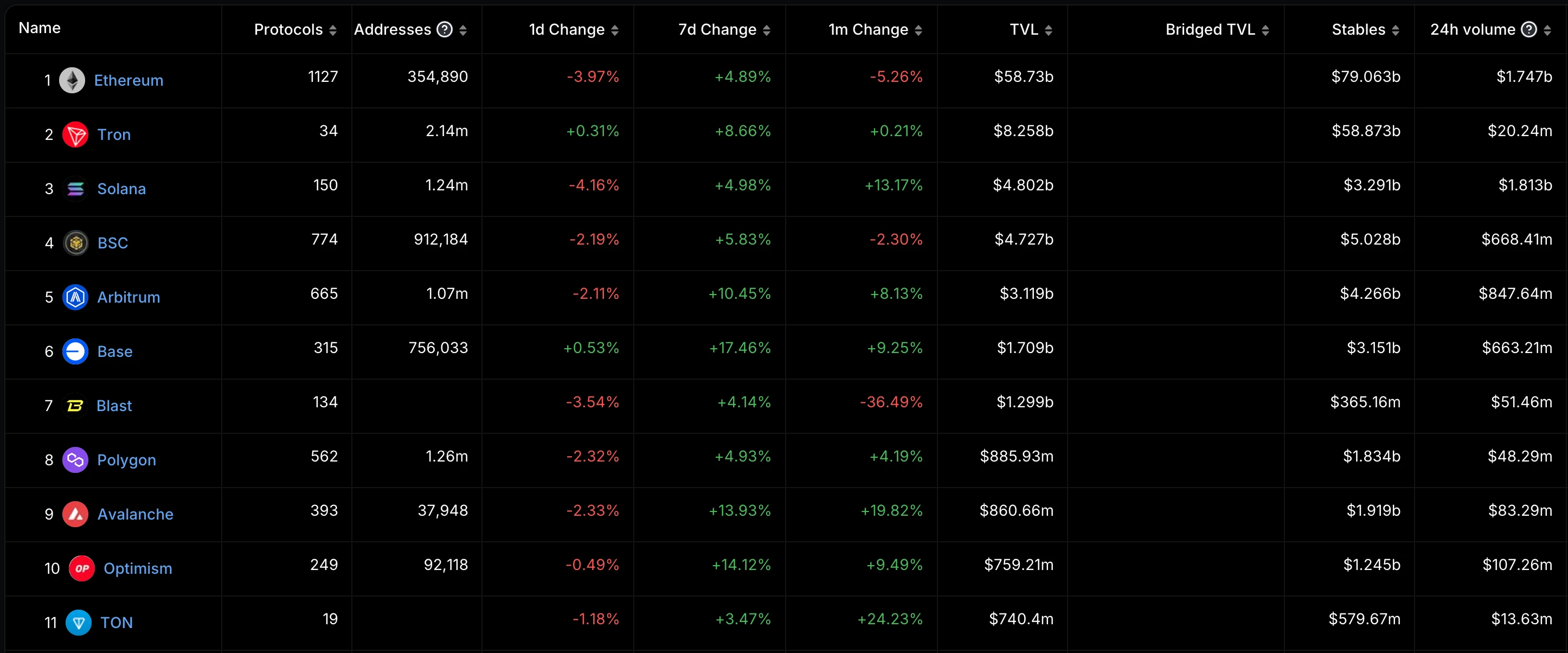Mini Program Revolution: Telegram Mini Program’s Web3 Transformation Journey
Original author : YuppieZombie , Lumos Ngok , Noah Ho
introduction
Recently, the Telegram ecosystem has developed rapidly and has become a hot topic in the Web3 field. Telegram, a communications giant with 900 million users, has quietly launched mini-programs and robot development functions. Currently, Telegram mini-programs can completely replace most websites, support seamless authorization, integrated payment through 20 payment providers (including Google Pay and Apple Pay), and more customized functions, such as automatic news and news summary information services, and the recently popular Catizen mini-game. In addition, Telegram has also developed the Ton chain to support convenient blockchain transactions. This traffic + payment route similar to WeChat has enabled Telegram to develop rapidly.
Chinese users are already very familiar with WeChat Mini Programs. Nowadays, Mini Programs have penetrated into every aspect of life. For example, when ordering a cup of Luckin Coffee, the store often recommends placing an order through a Mini Program to enjoy a more favorable price. Another example is the Maoyan and Taopiaopiao Mini Programs on WeChat, which can complete movie ticket purchases with just a simple pull of the WeChat interface, which is extremely convenient. Recently, with the explosion of GPT, Kimi, the top AI assistant in China, has also entered the WeChat Mini Program. Users only need to pull down the WeChat page to ask Kimi questions anytime and anywhere, which facilitates work and study. The Internet era has experienced a development process from the initial web version to the flourishing of various apps, and now it has evolved to a situation where several major platforms such as WeChat, Alipay, Douyin, and Meituan monopolize the market. With the monopoly of Internet giants, individual shops have gradually gone online on various platforms, and each platform contains a large number of Mini Programs, which are so dazzling that they are even too numerous to be annoying.
Against this backdrop, this article will delve into the development history and current status of Web2 and Web3 mini-programs. First, we will review the development history of WeChat mini-programs, analyzing the reasons for their success and the existing ecosystem. Next, we will introduce the rise of Telegram mini-programs, explore their integration with Web3 technology and their application in the blockchain field. Finally, we will look forward to the future development trends of mini-programs, exploring how they will continue to change our lifestyles and lead the next era of the Internet.
Web2 Era: The Development History and Current Status of Mini Programs
Origin of Mini Programs
The origin and development of mini programs are a process jointly promoted by many large companies, among which WeChat mini programs are the earliest and most typical representatives. The origin of mini programs can be traced back to 2013, when Baidu proposed the concept of light applications, defining a full-featured app that does not need to be downloaded and can be searched and used immediately, with a user experience comparable to that of native apps and the searchability and intelligent distribution characteristics of web apps. However, light applications did not achieve the expected success. Subsequently, Google proposed the concept of PWA (Progressive Web App) in 2016, but it was not widely used in China. In the end, WeChat mini programs successfully led the development trend of mini programs with WeChats huge user base and strong platform support. Today, mini programs have become an indispensable part of the mobile Internet field, providing new possibilities for users and developers.
-
WeChat Mini Programs: The concept of WeChat Mini Programs was first proposed by Zhang Xiaolong in 2016, aiming to provide a new service form, allowing users to enjoy at your fingertips services in the WeChat ecosystem. On January 9, 2017, WeChat Mini Programs were officially launched, and users can use the application without downloading and installing it, realizing the concept of use it and leave. WeChat Mini Programs have developed rapidly and become an important tool for connecting online and offline services. In 2018, the Mini Program Advertising Component was launched, allowing developers to earn advertising revenue through Mini Programs.
-
Alipay Mini Program: On September 20, 2017, the Alipay Mini Program was officially opened to ordinary users. In April 2018, the State Administration for Market Regulation launched the Electronic Business License Mini Program on Alipay, allowing business owners to receive and use business licenses at home. To date, Alipay has become the second largest mini program platform in China.
-
Baidu Mini Program: On July 4, 2018, Baidu Smart Mini Program was officially launched. On January 10, 2019, Guangdong Public Security Department, Baidu and other Internet companies jointly launched the Guangdong 110 smart mini program alarm platform to accelerate the construction of smart new policing. On April 25, the national mini program Switzerland was launched. On November 25, Baidu announced that the monthly active users of the smart mini program exceeded 300 million.
-
Douyin Mini Program: In July 2021, Douyin piloted its own Xindong Takeaway service. Although it was eventually removed from the shelves due to the difficulty of building a delivery system, this attempt opened up Douyin Mini Programs exploration in the field of local life services. As of March 2024, the traffic of Douyin platform Mini Programs reached 232 million.
Reasons for the explosion of mini programs
-
User convenience: Mini Programs provide users with an extremely convenient user experience with their features of “no installation required, within easy reach, use and go, no need to uninstall”.
-
Low development and maintenance costs: Compared with native applications, the development cost of mini programs is significantly lower because they do not need to be developed separately for different operating systems and are easier to maintain. For example, WeChat mini program developers can use familiar front-end technologies such as HTML, CSS, and JavaScript for development. At the same time, WeChat mini programs provide a wealth of APIs and components, which can easily call the functions provided by WeChat, such as obtaining user information, local storage, payment functions, etc., without having to develop from scratch. In addition, the platform uniformly handles sandbox isolation, platform control (authentication, review, version control), syntax limitation, capability encapsulation, package compilation and loading, etc., so that the stability and security of mini programs can be guaranteed.
-
Huge potential user base: WeChat (as of March 31, 2024, WeChat and WeChat combined monthly active accounts of 1.359 billion), Alipay (as of June 2022, 1.045 billion), Douyin (as of June 2023, Douyin monthly active users of about 723 million) and other platforms have a huge user base, which provides a huge potential market and user base for mini programs. In March 2024, the traffic of WeChat, Alipay, Baidu, and Douyin platforms reached 945 million, 648 million, 389 million, and 232 million, respectively, forming a strong traffic pool effect for mid- and long-tail APPs and offline merchants.
-
Traffic and marketing advantages: WeChat Mini Programs can be seamlessly integrated with other WeChat functions such as official accounts, WeChat payment, discovery bar, search bar, etc., and use WeChats social network for rapid dissemination and marketing. Alipay Mini Programs enhance user retention and brand trust through the combination of life accounts and Mini Programs, especially in low-frequency businesses. Douyin Mini Programs benefit from the traffic aggregation advantage of the Douyin platform, and its user immersion time is significantly higher than other platforms.
-
Lightweight application scenario adaptability: The lightweight design of mini programs is particularly suitable for those tool-type application scenarios that are not used frequently but are indispensable. Mini programs occupy very little storage space on mobile phones and only load the resources and data currently needed during operation. At the same time, their design tends to be simple and lightweight. Developers are encouraged to retain only necessary functions and avoid redundancy, making the size of mini programs much smaller than traditional apps with rich functions. In addition, the update and maintenance of mini programs are usually managed uniformly by the host platform, and users do not need to update manually.
-
Avoiding platform revenue sharing: For developers, mini programs can avoid the high revenue sharing and strict review mechanisms of platforms such as Apple’s App Store, thereby increasing revenue and saving time costs.
In summary, the reason why WeChat Mini Programs are favored by developers and users is mainly due to their advantages in convenience, cost, user base, marketing capabilities, adaptability to application scenarios, and avoiding platform sharing. These advantages make Mini Programs the preferred platform for many companies and individual developers, and also make users more inclined to use Mini Programs rather than download traditional apps.
The composition and ecology of the mini program industry chain
-
Comprehensive competition among multiple platforms: Currently, the mini program industry involves almost all major Internet companies: WeChat, Alipay, Douyin, Baidu Smart, Meituan, Taobao, JD.com, Xiaohongshu, Kuaishou, etc. Developers cover almost all online scenarios: online shopping, life services, games, government affairs, content consulting, videos, tools, community group buying, offline retail, catering, tourism, education, pictures/photography/videos and social networking. Various service providers (SaaS, BaaS, development service providers, mini program stores, marketing service providers, MCN and agency operations) provide solutions, operations, advertising, live broadcasts, data and underlying architecture for mini programs. Mini programs provide commercial/social services and user sedimentation for platforms, while platforms provide mini program ecology and business scenarios. Governments, media, enterprises and venture capital provide investment, resource integration and partial publicity for mini programs, and mini programs return direct investment returns and production.
-
Users are already accustomed to using mini programs in their daily lives: In 2023, the number of Chinese Internet application users in the fields of instant messaging, short videos, online payment, and search engines reached 1.0381 billion, 1.0185 billion, 911.4 million, and 801.7 million, respectively. The average monthly number of mini programs used by the entire network is 15.2.
-
Development momentum: In terms of the number and transaction volume of mini programs, WeChat and Alipay are on par and ahead of other platforms such as Douyin, Kuaishou, and Baidu. WeChat firmly holds the top spot, and Alipay has become the second largest open ecosystem of the mini program Internet, and the top platforms are accelerating their entry. Douyins mini program has a strong growth momentum, with the number of mini programs increasing by 280% year-on-year, the number of developers increasing by 640% year-on-year, the mini program DAU increasing by 84% year-on-year, and the number of mini program matrix accounts increasing by 201% month-on-month on average (March to December 2023).
-
Mini Program Industry Distribution: Life service mini programs have been included in various rankings the most times, with the highest proportion and the largest number of visits (about 40%). The number of offline retail and games on the list has begun to increase significantly. Online shopping mini programs are affected by the economic environment and fluctuate greatly, but the number of shares accounts for the highest proportion (up to 49%). At the same time, vertical e-commerce accounts for the largest proportion of online shopping mini programs (70.2%). Life service mini programs are widely used, with a wide variety of types and a large space for innovation. Tool mini programs have the most stable development. It is worth noting that mini program short dramas have risen and become the most profitable track in the second half of 2023.
-
AI helps mini program services become more advanced and sophisticated: The application of AI technology in mini program services is driving the services to be more efficient, smarter, and more personalized. The following are several common scenarios: personalized recommendations, intelligent customer service, voice interaction, automated marketing, content generation, intelligent search, etc.
-
The content production and marketing of mini programs are formalized: the publicity outlet relies on the social relationships of KOLs to endorse products and MCN companies to expand publicity. The drainage method focuses on driving unstructured groups and guiding the general public to participate in brand building. It is also worth mentioning that the trend of brand co-branding has emerged, and mini programs have helped the new content marketing of the entire platform. The Jiangxiang Latte (Moutai × Luckin Coffee) has become popular all over the Internet, which is the most successful case.
-
The vertical fields of life and entertainment have great potential: vertical fields such as maternal and child care, travel, science popularization, pets, film and television entertainment, automobiles, and health have a high average replacement rate, while the number of users and average time spent per person are growing strongly.
Web3 Era: The Rise and Characteristics of Telegram Mini Apps
Telegram recently introduced a new feature that allows running Mini Apps in its application, which is similar to WeChat applets, enabling it to provide users with a flexible interface similar to Internet websites, so as to perform various operations directly in Telegram, such as playing small games, electronic payments, etc. This feature is similar to the bots that have been running in Telegram for some time, but provides a further user experience.
Specifically, Telegram Mini Apps has the following features:
-
Seamless Integration: Telegram Mini Apps integrate directly into Telegram, one of the most popular messaging platforms with millions of active users. A user might be discussing an upcoming party in a Telegram chat. With Mini Apps, they can open an app directly in the chat to book a venue, select catering services, and even purchase tickets, all without leaving the Telegram app.
-
Enhanced user experience: Users can use interactive and complex web applications without downloading or installing applications separately. Suppose there is a Mini App that is an online store, users can browse products, view recommendations, and make purchases directly in Telegram without downloading additional shopping apps. This experience is similar to visiting a full-featured e-commerce website in a browser, but fully integrated in Telegram.
-
Versatility: Mini Apps can be used in a variety of scenarios such as e-commerce, customer support, games, and quizzes. Because Mini Apps can be any type of application, such as an online education platform where users can access courses, take quizzes and exams directly in Telegram, or a fitness app that provides exercise guidance and health tracking.
-
Rapid development: Developers can use familiar web technologies such as HTML, CSS, and JavaScript to quickly develop Mini Apps. A developer may develop a simple application in a few days.
-
Cross-platform compatibility: Mini Apps can be used in all official Telegram applications, whether users are on mobile phones, tablets, computers or through the web version of Telegram, they can access and use Mini Apps. This means that developers do not need to develop multiple versions of applications for different platforms.
-
Improve user interaction: Mini Apps provide a simplified way for users to communicate with projects. A Mini App can be an interactive survey or voting tool where users can directly participate in surveys, collect feedback or make decisions in Telegram groups. This kind of application can promote communication and collaboration within the group and increase participation.
In addition, Telegrams Mini Apps also cooperated with TON to enhance the functionality of Mini Apps through TON Chain. TONs Mini Apps provides a convenient entry point, allowing Web2 users to easily step into the Web3 world. In fact, the TON public chain was originally promoted by Telegram, but it was cancelled in 2019 due to the intervention of the US Securities and Exchange Commission (SEC). Despite this, the community and other developer teams continued to promote the project, forming the current TON public chain. Although TON has no direct relationship with Telegram, Telegram founder Pavel Durov and the team have repeatedly supported the project, emphasizing the business relevance of the two.
Specifically, the cooperation between TON (The Open Network) and Telegram’s Mini Apps can bring many benefits to the latter:
-
The TON payment system allows users to make instant and fast payments within Telegram, greatly improving the payment experience and convenience.
-
Through integration with TON, Telegrams Mini Apps can also support fiat currency payments, further expanding the coverage and convenience of payments.
-
TONs sharding technology improves the scalability and performance of the blockchain, enabling Mini Apps to handle larger-scale transactions and user requests and support more complex application scenarios.
-
TONs token economic model can provide economic incentives for Mini Apps, encouraging users to participate in and use applications, while providing incentive mechanisms for developers to promote the continuous development and innovation of applications.
Comparison between WeChat Mini Programs and Telegram Mini Apps
WeChat Mini Programs is a lightweight application platform launched by Tencent in 2017, which allows users to use various applications within WeChat without downloading and installing them. Initially, mini programs mainly provided basic tools and service functions, and gradually expanded to e-commerce, games, social networking, education and other fields. With the continuous improvement of functions and the diversification of user needs, WeChat Mini Programs has introduced a wealth of development tools and interfaces, and integrated powerful functions such as WeChat Pay, quickly becoming an important part of Chinas mobile Internet ecosystem. Its openness and convenience have attracted a large number of developers and enterprises, and promoted the rapid development and popularization of mini programs. Although WeChat Mini Programs and Telegram Mini Apps are small applications embedded in social platforms, they differ significantly in many aspects:
1. User experience and access method
WeChat Mini Program
-
User experience: Users can access mini programs by scanning QR codes, sharing links, or searching within WeChat. The interface is usually consistent with the overall style of WeChat, and the user experience is smooth.
-
Access method: Developers use the development tools and APIs provided by WeChat to build mini programs, mainly using technologies such as JavaScript, WXML, and WXSS. They must pass WeChats review before release.
Telegram Mini Apps
-
User experience: Users can access Mini Apps through chatbots, groups, channels, or embedded buttons. The interface design is more free and can break away from Telegrams default style to bring a diverse experience.
-
Access method: Developers use the Bot API and Mini Apps API provided by Telegram to develop applications, mainly using standard web technologies such as HTML, CSS and JavaScript. The publishing process is relatively simple and there is no strict review mechanism.
2. Application scenarios and business models
WeChat Mini Program
-
Application scenarios: covers a wide range of fields such as e-commerce, games, social networking, tools, education, etc., and is particularly suitable for lightweight and high-frequency applications.
-
Business model: Mainly through service charges, advertising, e-commerce and value-added services. WeChat provides a variety of monetization methods, such as WeChat payment, advertising platform, etc.
Telegram Mini Apps
-
Application scenarios: mostly used for information services, entertainment, financial tools and social interaction. Due to Telegrams advantages in privacy protection and security, financial tools and private social networking will be its strengths.
-
Business model: The business model of Telegram Mini Apps is still under exploration, and it may be monetized through subscription services, value-added functions and third-party payment interfaces.
3. Governance and community engagement
WeChat Mini Program
-
Governance: Led by Tencent, with a strict review mechanism to ensure content compliance and security.
-
Community participation: The developer community is relatively closed and relies more on Tencents support and official documentation.
Telegram Mini Apps
-
Governance: Relatively open, Telegram provides basic usage specifications, but has a high degree of freedom in development and release.
-
Community participation: The developer community is open, Telegram officials frequently interact with developers, and the community contributes greatly.
Telegram: Bridging web2 and web3
Telegram mini-programs are very popular at present. More importantly, they have already played the role of a bridge between web2 and web3. Its huge user base provides a large base for this. Its freedom and lack of censorship make its own user profile more consistent with the group that accepts web3. As the most web3 web2 software, a large proportion of its huge user base are web3 enthusiasts or potential web3 users. As analyzed above, the low development cost, use and dissemination threshold of mini-programs make the TG ecosystem very easy to spread. And the native support of Ton further lowers the threshold for on-chain interaction and other aspects. In this section, we will introduce some popular applications in the current TG ecosystem, and introduce how they introduce web2 users to web3 through cases.
NotCoin
NotCoin is a tap-tap game on the TG applet. Its main operation is very simple: users only need to keep clicking on the screen when they have physical strength to get in-game coins. Based on the traditional GameFis Play 2 Earn, NotCoin proposed the concept of Tap2Earn, where users can make money by just clicking on the screen. In addition, NotCoin also has functions such as skill improvement, task system, teamwork, points league, and inviting new users. From its official launch on January 1, 2024 to the launch of the token on Binance on May 16, NotCoin attracted more than 35 million players and more than 5 million daily active users.
As a simple TG applet game, NotCoin has greatly lowered the user threshold with the help of a huge TG user base and simple operation. At the same time, the fission mechanism in the game makes it spread very quickly. In terms of the token economic system, the project party only retained 5% of the tokens, and there was no VC reservation. Of the remaining 95%, 78% was allocated to all game users. This community project without VC and the practice of allocating most tokens to community users is very politically correct in the current environment and is widely praised by community users. In the end, NotCoin was listed on Binance on May 16, with a peak market value of US$2 billion.
NotCoin has successfully attracted a large number of users and subtly converted a large number of users into web3 users. The project party airdropped most of the tokens to players. Under the premise of such a large number of players, this airdrop covered a large number of users. During the airdrop stage, users have two choices: transfer tokens to Binance or transfer to TG wallet. No matter which one the user chooses, it brings new players to the web3 world. Users who choose to transfer the airdrop to Binance may become virtual currency traders, while users who choose to transfer the airdrop to TG wallet become players on the Ton chain.
NotCoins success depends not only on TGs multi-faceted support, but also on Binances support. Binance has long been committed to introducing web2 users and injecting fresh blood into web3. Looking back at the controversial Binance LaunchPad projects EDU and HOOK in 2023, they are both non-web3 native projects, an education platform for asset tokenization and a web3 learning platform, respectively. Binance has already occupied a certain market share among web3 users, but in the face of high customer acquisition costs, it hopes to introduce more web2 users to web3, expand the entire market size, and contribute to its own user base. Therefore, Binance noticed NotCoin as early as the end of February and conducted joint activities with it. In the end, NotCoin successfully landed on Binance LaunchPool.
From Binances perspective, TG users have a high overlap with web3 user portraits, and TG users are of high quality. Therefore, Binance chose to list NotCoin on its platform. NotCoin is a successful example. As a TG mini-game, it attracted tens of millions of users in just over four months, and converted these users into virtual currency traders or blockchain users through airdrops.
Catizen
Catizen comes from a team with extensive experience in mini-programs, with more than 5 years of experience in the development and operation of WeChat mini-program games and Facebook games. Compared with other games, this game is more mature in terms of gameplay. In the game, the player plays the role of a cat shop owner, and the cats will automatically receive customers to earn income. The income depends on the number and level of cats in the shop. Players can use gold coins to buy new cats, and synthesize two cats of the same level to get a higher level cat to earn higher income per second.
Catizen has gained more than 20 million users and 2.5 million daily active users (DAU) within three months of its launch, thanks to its cute style and addictive business game attributes. Through excellent in-game user payment guidance and potential airdrop expectations, Catizen has earned more than $12 million through TG in-app purchases. This achievement is very impressive, especially for traditional GameFi, which has a strong Ponzi attribute due to the lack of external income. Catizen has earned more than $10 million in revenue within three months, which has solved the problem of no external income to a certain extent.
Catizen not only attracted tens of millions of players, but also guided players to bind TG wallets and interact with on-chain contracts in the game. There are some options in the game where users can obtain in-game benefits through smart contract interactions. These interactions are conducted on the Ton chain and do not require payment, only gas fees. For example, the puppy that appears from time to time can give players 500% of the benefits for a period of time. If it is obtained for free, it is only 1 minute, but it can be obtained through contract interaction for 4 minutes. Catizens clever in-game incentive mechanism has enabled it to have more than one million on-chain users, who interact with smart contracts on Ton through Catizen. Catizens guidance may be because it accepted investment from Ton.
Catizen has achieved outstanding results in many aspects. It not only attracted a large number of users, brought high returns to the project, made web3 games profitable, but also guided a large number of users to enter the Ton chain and become web3 players. In terms of airdrops, although Catizen is not as generous to users as NotCoin, the initial plan allocated 20% to the team and 8% to VC, and only 35% to users, but it has since continuously increased the airdrop ratio to 43%.
Hamster Kombat
Hamster Kombat is similar to NotCoin, but it is not just a copycat. Compared with the simple gameplay and settings of NotCoin, Hamster Kombat is more complex in terms of background settings and gameplay. The background setting of the game is that the player plays the role of the boss of a virtual currency exchange, and gains points by consuming energy and clicking on the screen. The game also adds business elements, and players can upgrade the exchange by consuming gold coins, such as upgrading employee levels, marketing, and compliance investments, so as to obtain more benefits.
This background setting allows players to experience the game from the perspective of a virtual currency exchange CEO, which increases their understanding and recognition of virtual currency. In addition, Hamster Kombat also combines the task system with the task of watching videos to divert traffic to its own YouTube channel. Players watch two videos every day, introducing blockchain knowledge and blockchain news respectively.
Hamster Kombat has performed very well. As of the end of June, the game has more than 200 million users. At the same time, its official YouTube channel has more than 30 million subscribers, and the average video views exceed 20 million. The games airdrop mechanism requires users to bind their TG wallet first, which effectively guides users into the web3 world.
From the perspective of a web3 guide, Hamster Kombat has been successful in many aspects. First, it has attracted a large number of users and enabled them to register and bind TG wallets through the airdrop mechanism. Second, in terms of user education, the game has a unique gameplay that allows players to play the role of the CEO of a virtual currency exchange, enhancing their understanding of virtual currencies. Through daily video uploads and a task system, the game encourages players to learn web3 knowledge and follow web3 news, allowing them to accept these concepts subtly. Acceptance and learning are prerequisites for joining web3, and Hamster Kombat has successfully achieved this.
Conclusion and Outlook
Relying on TGs high potential web3 customers, the mini program that seamlessly connects payment and on-chain interaction, and the convenient semi-centralized mobile application, TG provides a new entrance to the web3 world. From the data, the popularity of the TG mini program has brought rapid user growth to Ton. Since the beginning of 2024, the number of active wallets has increased tenfold from one million to more than ten million in seven months. Similarly, this is also reflected in the transaction gas fee. The daily consumption of Ton on the chain has increased from an average of 1,000 Ton last year to tens of thousands of Ton per day today.
TGs mini program is more like a hybrid of web2 and web3, neither completely centralized nor completely decentralized. From the perspective of payment methods, there are centralized fiat currency in-app purchases, as well as on-chain transfers and interactions. On-chain wallets are also divided into custodial abstract account wallets and external wallets. From an operational perspective, some operations are handled centrally, while those involving assets are handled on-chain. The profit model is also mixed, including web2 advertising fees, in-game purchase fees, and web3 NFT mint fees and transaction fees. In the TG ecosystem, blockchain is more like a supplement to web2 rather than a core role in native web3. This approach enriches the application scenarios of blockchain technology and benefits traditional applications.
Although the recent performance of the TG applet is very impressive, it has brought a lot of fresh blood to the web3 world and attracted many users to be active on the Ton chain. But in the long run, the TG ecosystem is different from BTC, Ethereum, Solana, etc., which use blockchain technology to serve finance. The TG ecosystem is more like using technology to serve other fields. This is an exploration and attempt to use blockchain technology in more applications, but it is different from the current mainstream web3 dominated by finance.
This difference comes from several aspects. The first is the difference in users. In the financial-based ecosystem, users are mainly investors, while in the TG ecosystem, most users are consumers. The number of investors is less than that of consumers, and the average spending power of investors is higher. The second is the difference in applications. Mainstream chains such as ETH and Solana mainly focus on the financial level, including DeFi, Oracle, etc. Even GameFi and SocialFi focus on the financial level and eventually become a capital disk. The larger size of these chains provides certain guarantees for financial security and liquidity. The hottest projects in the TG ecosystem are mainly games, gambling, payments, etc., which rely more on the number of users and the length of time they are used.
The TVL ranking can be seen in the figure above. Even if Tons TVL soars to $700 million, it is still far behind ETHs 50 billion and Solana and BSCs 4 billion. Therefore, we believe that the TG ecosystem is not stealing business from existing web3 projects, but opening up a new path to convert web2 users into web3 users. Its application scenarios are different from traditional web3. The TG ecosystem is more like a WeChat applet that enhances applications through payment functions, while ETH, Solana and other ecosystems are Alipay that enhances finance through technology. The current TG ecosystem is still in its early stages, and there will definitely be more practical applications in the TG ecosystem in the future, not just limited to games, and eventually becoming a super app like WeChat. The development of the Ton chain will be more inclined to the payment method and assistance of applications. Whether the TG ecosystem will get more involved in the financial field depends on the response of traditional old chains.
about Us
Welcome to Topology Lab! Here, you can study side by side with PhDs from top universities, discuss and share profound insights and incisive analysis in the field of blockchain.
Follow us on X: @TopologyLab
Join the discussion on Telegram: @topologylabcommunitychat
This article is sourced from the internet: Mini Program Revolution: Telegram Mini Program’s Web3 Transformation Journey
Related: Financial markets rally continues, Bitcoin bulls break through $65,000
Original author: Mary Liu, BitpushNews Financial markets continued to rally on Tuesday, with U.S. stocks, gold and cryptocurrency markets all surging. In the crypto market, Bitpush data showed that Bitcoin hit its highest price in four weeks during the session, soaring above $65,000 for the first time since the end of June. As of press time, the trading price was $64,804, up 1.9% in 24 hours. The strongest performer among major altcoins was XRP, which rose 9% on Tuesday, extending its weekly gains to 35%. The broader altcoin market also benefited from investor enthusiasm, with 90% of the top 200 tokens by market capitalization rising. Worldcoin (WLD) was the best performer, up 24.3%, followed by Terra Classic (LUNC) up 20% and Core (CORE) up 18.2%. WEMIX (WEMIX) was the biggest…

